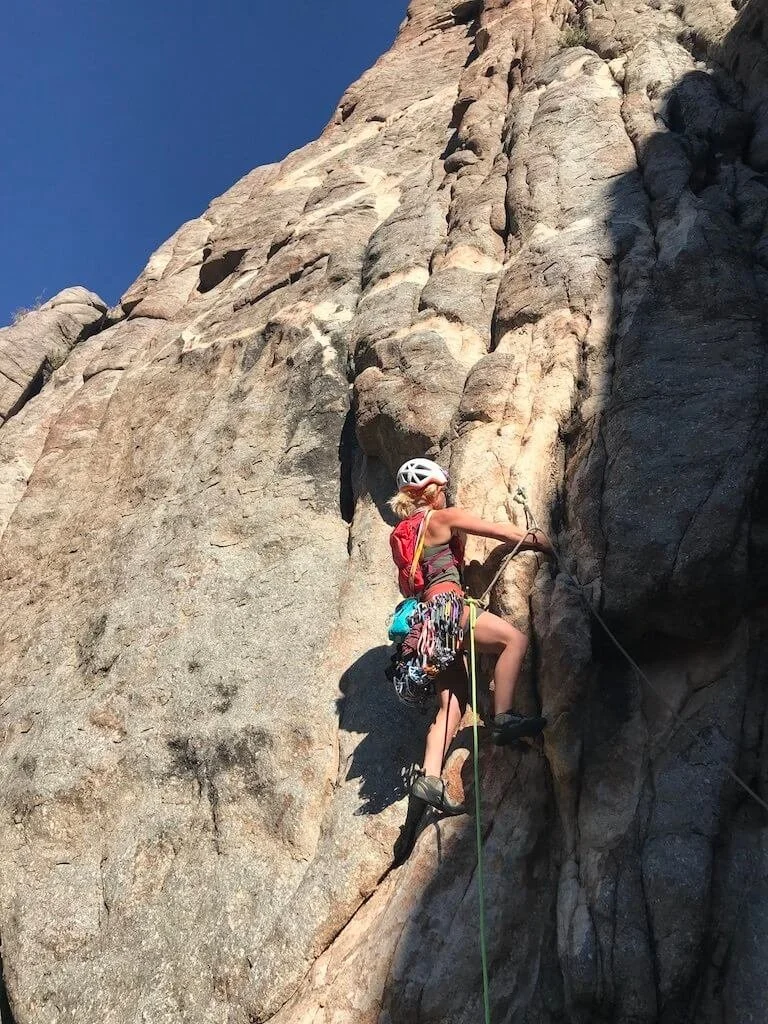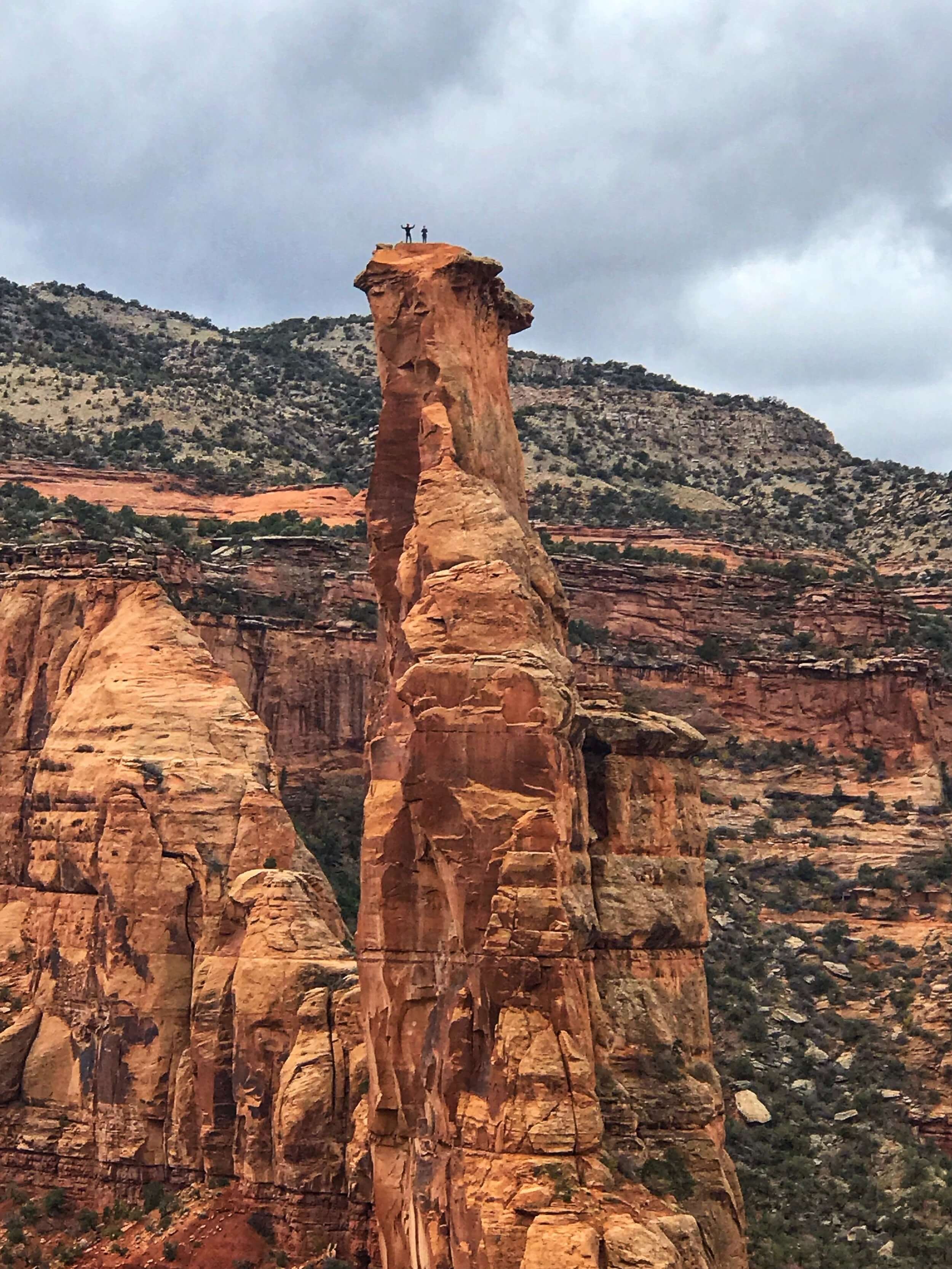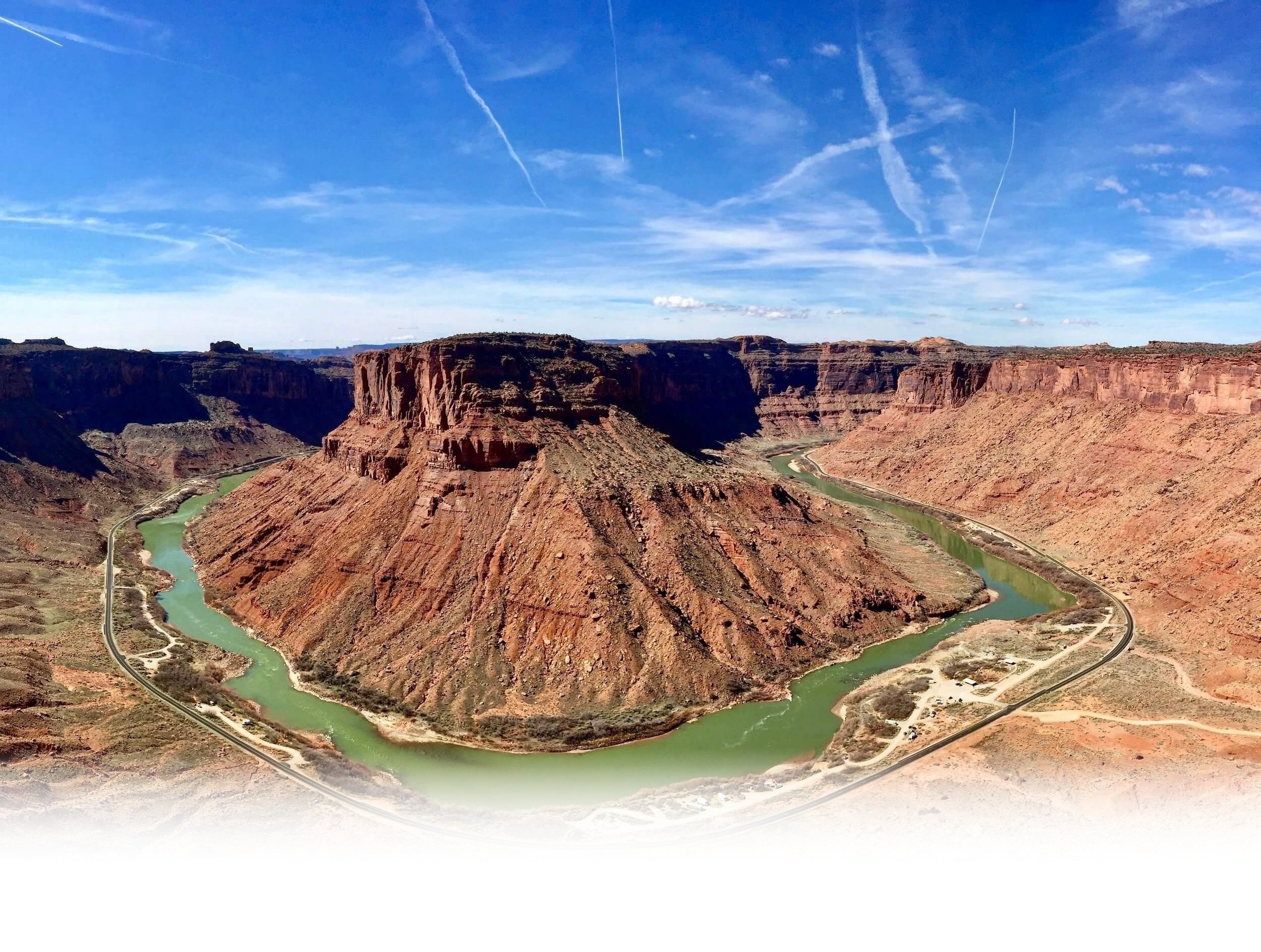
Moab Rock Climbing
Come climbing in the Moab desert with local, AMGA certified guides - learn how to crack climb with personalized instruction, stand on the summit of a desert tower and enjoy sunny cragging amongst the hidden canyons. A desert oasis set amongst towering red cliffs, the town of Moab, Utah serves as a basecamp for adventure: world class rock climbing, hiking, mountain biking and rafting. Skyward Mountaineering has been recreating and guiding rock climbing in Moab for decades, exploring the desert and finding hidden gems, let us share an unforgettable climbing trip in Moab with you.

Multi and single pitch rock climbing
Routes range from 5.6 to 5.13
No previous experience required, with routes for all ability levels
Full day (8 hours)
Late February - late May & mid September - late November
Moab, Utah
4,026 ft / 1,227 m
Climb A Desert Tower or Hone Your Crack Climbing At World Class Sandstone Crags
Skyward Mountaineering offers professionally guided rock climbing trips throughout Moab, a world class sandstone crack climbing destination! Surrounded by a plethora of towering red cliffs, spires rising from the sand and the Colorado River cutting through the middle of it all, the rock climbing options around Moab are endless. Whether you’re looking to focus on customized crack climbing instruction at one of the local cliffs, hone your trad leader skills or apply your climbing movement and efficiency on one of the many desert towers, Skyward Mountaineering offers customized private guided rock climbing in Moab for all abilities.
-
By far the most convenient rock climbing area in the Moab area, Wall Street is a roadside cragging destination that hosts dozens of incredible quality rock climbing routes. With a bag of chips and cold beverages 10 steps away in the cooler, you could literally belay from the car at this famous zone. From 5.6 slab climbing fun for the family to technical, thin crack climbing and challenging face climbing, Wall Street is filled with multiple classic routes that are fun and easy to hone your movement skills and get the most bang-for-the-buck by removing literally all approach time.
Here are some of our favorite rock climbing routes to guide at Wall Street:
30 Seconds Over Potash (5.8+)
Flakes of Wrath (5.9+)
Potash Bong Hit (5.9+)
Another Roadside Distraction (5.10)
Lucy in the Sky with Potash (5.10)
Static Cling (5.11-)
Skeletonic (5.11+)
Under the Boardwalk (5.12)
-
Just outside of downtown Moab, Kane Springs Road diverts from the large canyon cut by the Colorado River and enters a deep and narrow canyon surrounded by multiple fantastic rock climbing crags. The crags along Kane Springs Road host a variety of opportunity with some perfect for beginner climbers wanting to focus on movement and basic systems, others for more advanced climbers looking to improve their crack climbing skills, and even some big and challenging multi-pitch routes up prominent buttresses. With the short approaches we will very often visit multiple rock climbing areas in this zone on the same day.
Ice Cream Parlor:
A great rock climbing area with a short approach, this crag is stacked with single pitch low angle cracks to hone your techniques on moderate routes and also hosts several multipitch routes to practice transitions and efficiency without getting committed on a desert tower.Abraxas:
This sunny crag hosts multiple 5.10 cracks of a variety of sizes. Perfect for climbers looking to hone their crack climbing movement skills in a scenic setting. -
Look no further for multipitch rock climbing adventures on Moab’s desert towers. Castle Valley is arguably the most concentrated location for classic towers with a variety of grades from intermediate to advanced. Other classic routes, such as Ancient Art, Lighthouse Tower and other more obscure and challenging routes dot the landscape of the Moab desert.
We can create an itinerary that will help you learn the nuances of crack climbing so you can jam your way up to the summit of a desert tower with a smile on your face. Or if you’re just looking for a partner to cover the logistics and facilitate your dream ticklist route, our team of AMGA Rock Guides are excited to help you achieve your goals.
-
Moab has a rich geologic history, spanning each of the four major subdivisions of geologic time: Precambrian, Paleozoic, Mesozoic, and Cenozoic. The greatest concentration of exposed rock in Moab is from the Mesozoic age with an extensive fossil record, especially from that of dinosaurs!
Ancestral Puebloans and Fremont people, have lived on the Colorado Plateau (Moab area) since over 10,000 years ago! Around 2,000 years ago these tribes began farming and cultivating plants around Moab and the Four Corners region. The Nuche (commonly referred to as Ute), Paiute, Hopi, and Diné (commonly referred to as Navajo) have also lived on the Colorado Plateau. The Spanish called the Nuche people “Yutta”, which became the name for the state for Utah and the tribe’s name was shortened to Ute.

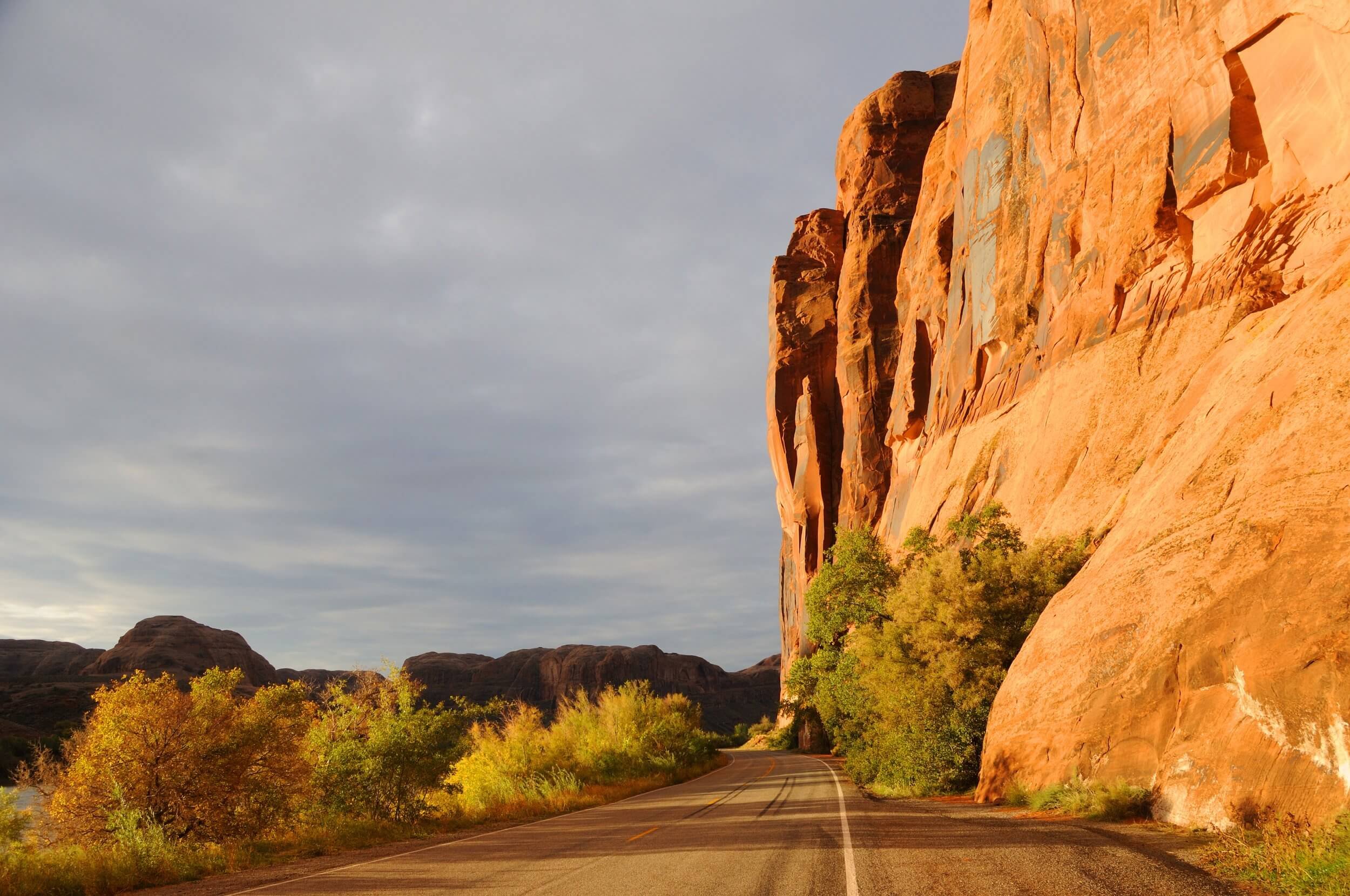



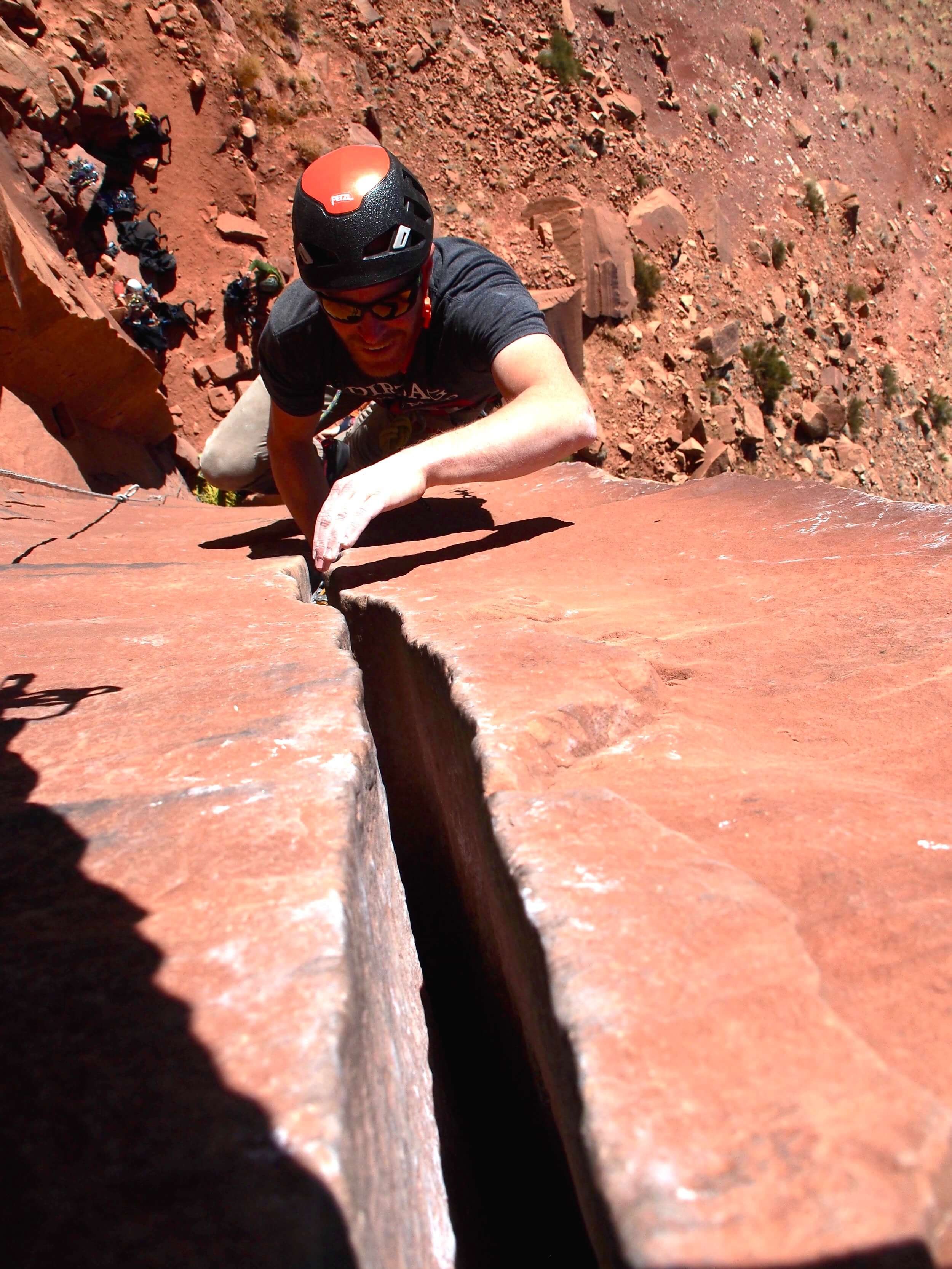






Frequently asked questions
Below are answers to common questions about climbing outdoors in Moab with Skyward Mountaineering:
-
Moab has rock climbing routes for all abilities and experience levels, from first time family fun options to expert crack climbers and desert rats. Most of the rock climbing in Moab is crack climbing though there are also several awesome sport climbing crags such as Mars, Scar, and Cinema. There are also entry level face climbing desert towers such as the East Rib on Looking Glass Rock, a 3 pitch 5.4 with a spectacular free hanging rappel, or Terma, a 3 pitch 5.9 overlooking the Colorado River and Big Bend.
For crack climbing aficionados, the Moab desert has lots of crack climbing to hone your technique and improve your efficiency on a variety of sizes. Many of the desert towers require a variety of crack climbing techniques, we commonly will spend a prep day cragging around Moab before launching on a big tower, thereby ensuring that climbers feel well prepared and have Type I fun on the multipitch routes.
-
Approaches to crags in Moab vary in length and roughness of terrain. Similar to the variety of routes for different abilities, there are very easy approaches such as roadside climbing at Wall Street; short hikes up well maintained trails (2-5 minutes) such as Ice Cream Parlor or River Road Dihedrals; easy/medium length hikes with some uphill gain on climber’s paths (~15 minutes) such as Abraxas or Deadman’s Buttress; and long approaches up steep and loose uphill trails such as many of the desert towers in Moab.
-
Yes! Skyward Mountaineering puts a lot of value in working with you to personalize every guided climbing trip, so details like the start time, hiking pace, photos, climbing instruction, bonus pitches afterwards, etc can all be adjusted to meet your specific goals. Your guide will reach out in the days before the climb to discuss these logistics, please let them know if you have any questions or specific requests.
Additionally, our administrative staff are climbers and guides too and we’re here to support you through the whole process. If you have any questions before booking your guided climb or before the trip starts please reach out to us and we are happy to answer your questions.
-
Welcome to the world of rock climbing, you’re life will likely be different from now on. Moab is an awesome spot for a rock climbing vacation. We highly recommend a 4 day itinerary with a one day break in the middle to rest your fingers. We will spend the first two days covering movement skills and fundamental climbing systems so you can build your confidence and be a self-sufficient climber. We’ll then sample some ofthe multipitch climbing around Moab so you can enjoy the exposure and classic croutes.
Only interested in a single day of rock climbing? That’s totally fine too, there are plenty of good beginner options in Moab and we’ll find the best spots for you to learn how to rock climb and have fun.
-
We guide toproping in Moab at a maximum of 4 climbers per guide. If you would like to climb with a group larger than 4 people we can add a guide so everyone is able to climb together. Contact us to discuss a rock climbing trip with groups larger than 4 people.
On multipitch routes, we climb at a maximum of 2 climbers per guide, but similarly can add another guide for additional climbers so you can all climb together.
-
We have a detailed equipment list to help you prepare and pack for your trip. If you have questions about any of the gear please let us know, we’re happy to help make recommendations or clarify.
Skyward Mountaineering provides all of the technical group climbing equipment, this includes ropes, anchor material, protection, etc. Many of clients are experienced rock climbers and prefer to use their own equipment, as such we only have a small amount of personal equipment for climbers to use. Please let the admin staff or your guide know ASAP if you expect to borrow personal climbing equipment such as backpacks, harness, helmet, belay device, carabiners, personal tether, etc. We do not have a fleet of rock climbing shoes, so this piece of gear is often not included, but again let us know and we can try our best to help.
-
The best weather for rock climbing in Moab is spring and fall. Temperatures are moderate and rain events are rare. It is also possible to rock climb sunny aspects during the winter though occasional storms pass through the Moab region and cold windy conditions are possible. The summer can be blazing hot and though it’s possible to climb shady aspects, we recommend restarting climbing in Moab around September at the start of fall.
-
Rock climbing in Moab is on a soft sandstone that is highly porous. Rain is absorbed into the rock and weakens the bond on hand holds and even bolts. Cams even can have a weaker holding power on the saturated sandstone. In the event of rain within 24 hours of our climbing trip in Moab, we may have to reschedule. This rescheduling will depend on how much rain occurs, whether the sun comes out, and what the wind speed/direction is. Thankfully, it’s rare that we have to cancel or reschedule a climb due to rain.
Our guides and office staff will work you to coordinate rescheduling, if necessary. For more information on our cancellation policy, please see our terms and conditions and contact us with any other questions.
-
If you know what dates you want to climb in Moab, you can book your trip directly on our website. You can also get in touch to discuss your goals and ask any questions, we’re happy to help and send you a custom booking.
Though we may have availability for last minute trips, please always reach out and ask, we highly recommend booking your trip at least 2 weeks in advance so we can guarantee your guide’s availability and ensure that you are confirmed with all of the logistics.


